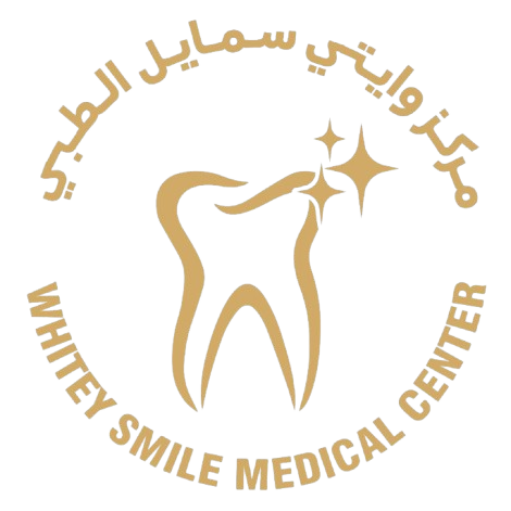Bone Grafting in the Context of Dental Implants at Whitey Smile Dental Clinic, Ras Al-Khaimah
When it comes to dental implants, one of the most essential factors for a successful procedure is the condition of the jawbone. For patients who have lost significant bone mass due to trauma, periodontal disease, or long-term tooth loss, there might not be enough healthy bone left to support the implant. In such cases, bone grafting can be a vital step in ensuring the success of dental implants.
What is Bone Grafting?
Bone grafting is a surgical procedure where bone material is added to the jawbone to promote bone growth in areas that lack sufficient bone density. It serves as a foundation for dental implants, providing the necessary support for the artificial tooth root to securely integrate with the jawbone.
At Whitey Smile Dental Clinic in Ras Al-Khaimah, we prioritize patient care and advanced procedures like bone grafting to ensure that each patient receives the best possible result from their dental implant treatment.
Why Bone Grafting is Necessary for Dental Implants
Dental implants require a stable and healthy jawbone for proper placement. When the bone is insufficient, there is an increased risk that the implant may fail to fuse correctly with the bone, which could lead to complications like implant failure or discomfort.
Several factors can lead to bone loss, including:
- Tooth Loss: After losing a tooth, the bone in the empty space starts to deteriorate. Without the stimulation that a tooth root provides, the bone gradually resorbs over time.
- Periodontal Disease: Severe gum disease can result in the loss of both teeth and bone.
- Trauma or Injury: Accidents or injuries that damage the jaw can lead to bone loss.
- Congenital Defects: Some individuals are born with insufficient bone in the jaw, making it challenging to place dental implants.
Bone grafting helps address these issues by rebuilding and regenerating the jawbone, creating a solid foundation for the dental implant.
Types of Bone Grafting
There are different types of bone grafting techniques that may be used, depending on the severity of bone loss and the specific needs of the patient:
Autograft: This type of graft uses bone from the patient’s own body, often from the chin, jaw, or hip. Since the bone is from the same person, there is minimal risk of rejection.
Allograft: An allograft uses bone from a donor, typically a cadaver, which has been processed and sterilized for use in patients.
Xenograft: This graft uses bone material from an animal, usually bovine (cow), and is often used in cases where the patient’s bone is severely damaged.
Alloplastic Grafts: These are synthetic bone substitutes that mimic natural bone and help stimulate the body’s healing process.
The choice of graft material is based on various factors, including the location of the implant, the patient’s medical history, and the extent of bone loss.
The Bone Grafting Procedure at Whitey Smile Dental Clinic
At Whitey Smile, we ensure that our patients feel comfortable and well-informed throughout the entire dental implant process, including bone grafting. Here’s a brief overview of what to expect:
Consultation and Evaluation: The process begins with a detailed consultation and examination. Our specialists use advanced imaging techniques to assess the condition of the jawbone and determine if bone grafting is necessary.
Preparation: Before the procedure, local anesthesia or sedation is administered to ensure the patient is relaxed and pain-free throughout the surgery.
Bone Grafting Surgery: The surgeon will carefully place the graft material in the areas where bone loss has occurred. The material may be secured with screws or other devices to hold it in place.
Healing and Integration: After the bone graft is placed, the patient will need several months for the bone to heal and fuse with the graft. This process, called osseointegration, is crucial for the stability of the dental implant.
Dental Implant Placement: Once the bone has healed sufficiently, the dental implant can be placed. The implant will fuse with the newly grafted bone, providing a stable base for the restoration (crown) that will eventually be placed on top.
Recovery and Aftercare
Recovery from bone grafting is generally straightforward, though patients may experience some swelling, bruising, and discomfort in the treated area. Our team at Whitey Smile will provide post-operative instructions to help ensure a smooth recovery, which typically involves:
- Resting and avoiding strenuous activities for a few days.
- Taking prescribed medications to manage pain and prevent infection.
- Attending follow-up appointments to monitor healing and ensure that the graft is integrating properly.
Conclusion
Bone grafting is a highly effective solution for patients who need dental implants but have insufficient bone structure in their jaw. At Whitey Smile Dental Clinic, we are committed to providing cutting-edge procedures that restore function and aesthetics to our patients’ smiles. Whether you’re facing bone loss due to tooth extraction, injury, or disease, our experienced team is here to guide you through the process and help you achieve the best possible results with dental implants.
If you’re considering dental implants or bone grafting, schedule a consultation with Whitey Smile today, and take the first step toward restoring your smile and confidence.





